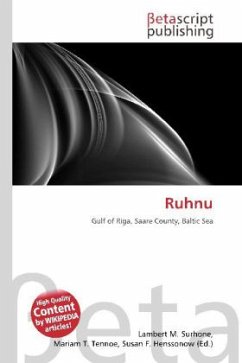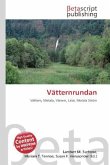Please note that the content of this book primarily consists of articles available from Wikipedia or other free sources online. Ruhnu (Swedish: Runö) is an island situated in the Gulf of Riga in the Baltic Sea. It belongs to Estonia and is an administrative part of Saare County. At 11.9 km2 it has currently less than 100, mostly ethnic Estonian permanent inhabitants. Prior to 1944 it was for centuries populated by ethnic Swedes and traditional Swedish law was used. The first archaeological artifacts of human activity in Ruhnu, assumed to be related to seasonal seal hunting, date back to around 5000 BC. The time of arrival of the first ancient Scandinavians in Ruhnu and the beginning of a permanent Swedish-speaking settlement is not known. It probably did not precede the Northern Crusades in the beginning of the 13th century, when the indigenous peoples of all the lands surrounding the Gulf of Riga were converted to Christianity and subjugated to the Teutonic Order. The first documented record of the island of Ruhnu, and of its Swedish population, is a 1341 letter sent by the Bishop of Courland which confirmed the islanders'' right to reside and manage their property in accordance with Swedish law.
Bitte wählen Sie Ihr Anliegen aus.
Rechnungen
Retourenschein anfordern
Bestellstatus
Storno








